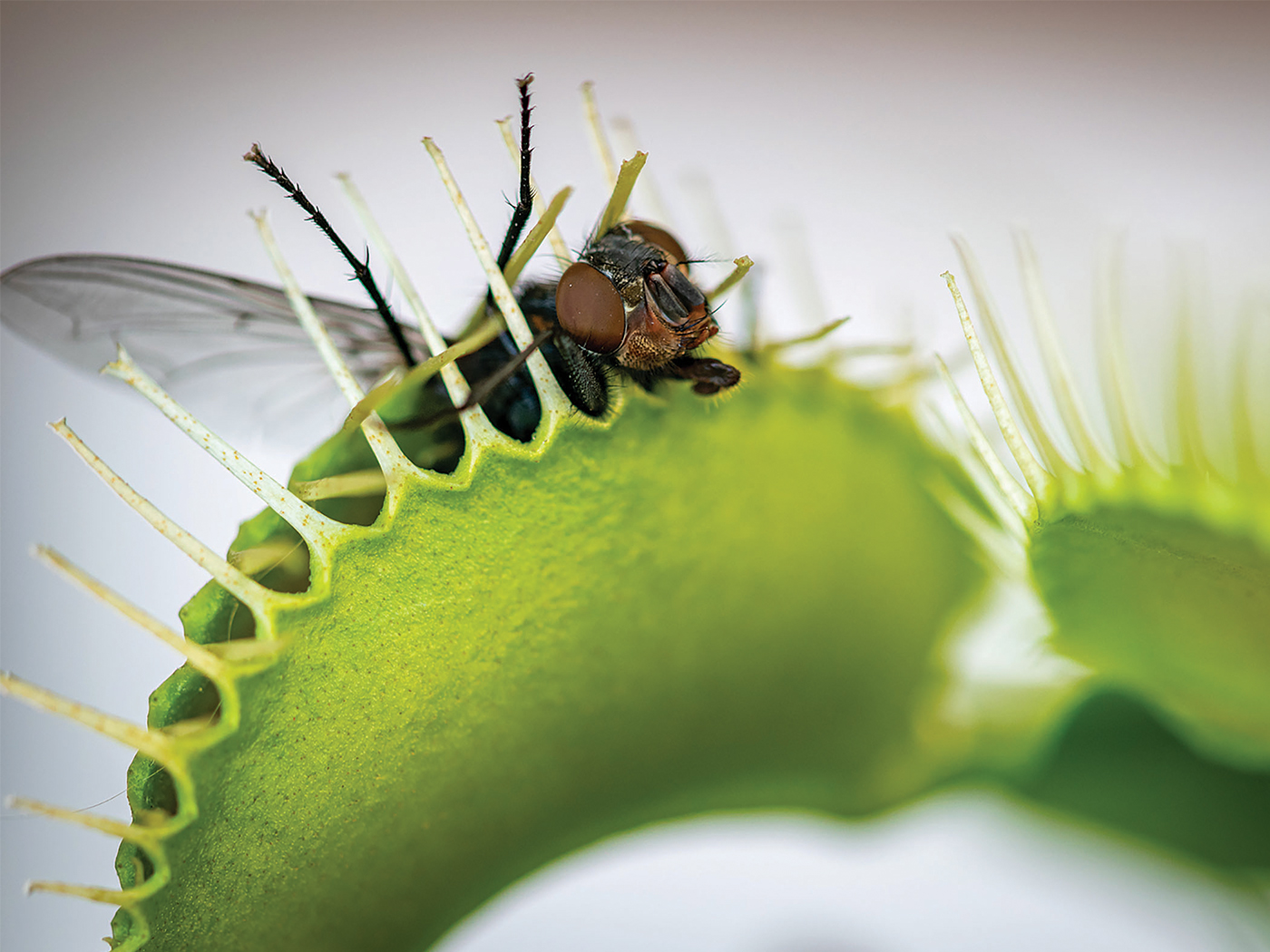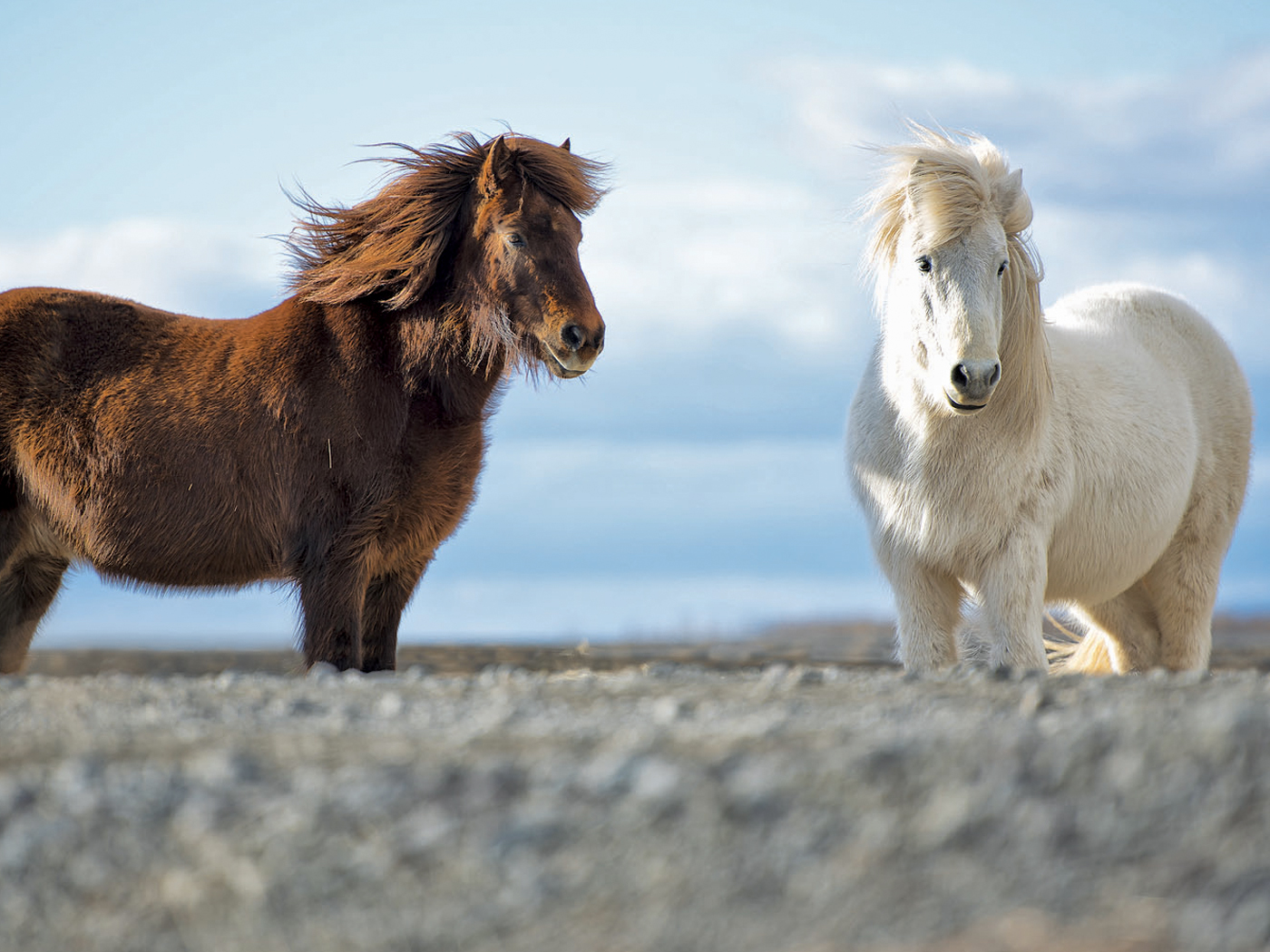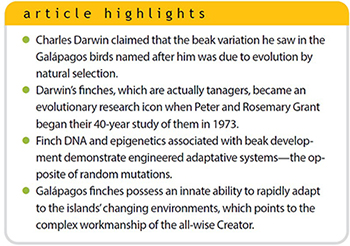 A group of birds known as Darwin’s finches live in the Galápagos Islands, which are located in the Pacific Ocean 600 miles west of Ecuador. These birds have been a leading icon for evolutionary research and observations. But do they really prove the neo-Darwinian paradigm of evolution through mutation and selection over long periods of time?
A group of birds known as Darwin’s finches live in the Galápagos Islands, which are located in the Pacific Ocean 600 miles west of Ecuador. These birds have been a leading icon for evolutionary research and observations. But do they really prove the neo-Darwinian paradigm of evolution through mutation and selection over long periods of time?
The Darwin’s Finch Story Begins
True finches comprise birds in the family Fringillidae that live all over the world except in Australia and the polar regions. But from a research perspective, the most renowned finches are the ones named after Darwin—which are actually not considered true finches since they are members of the tanager family (genus Geospiza). These finches got their fame from Charles Darwin’s visit to the Galápagos in 1835 on his HMS Beagle voyage. Darwin, Beagle captain Robert FitzRoy, and several assistants collected multiple finch specimens and brought them back to England.1
Darwin didn’t write about the finches until after he studied them in England. John Gould, a British systematist, initially described the birds as a set of unique species. When Darwin began examining them, he believed their beak variation was evidence for his theory of gradual evolution. He thought the beaks had been shaped by natural selection. Darwin wrote:
The most curious fact is the perfect gradation in size of the beaks of the different species of Geospiza. Seeing this gradation and diversity of structure in one small, intimately related group of birds, one might fancy that, from an original paucity of birds in this archipelago, one species had been taken and modified for different ends [by natural selection].1
At present, it’s claimed that about 13 species of dark-colored finches inhabit the Galápagos Islands. Each island hosts more than one species, and many of these species can interbreed. Darwin had collected nine of the 13 species.
Darwin’s Finches Become an Evolutionary Icon
While many modern textbooks assert these finches were a major discovery for Darwin’s theory of evolution, he did not include them in On the Origin of Species by Means of Natural Selection. The first person to coin the term “Darwin’s finches” was English surgeon and ornithologist Percy Lowe in 1936, which was more than 50 years after Darwin’s death. But the person who really brought the idea to the forefront of scientific thought was David Lack in his 1947 book Darwin’s Finches.2

Princeton University husband and wife team Peter and Rosemary Grant established Darwin’s finches as an evolutionary model system when they went to the Galápagos Islands in 1973. They carefully monitored the populations of various species of finches, focusing primarily on the island Daphne Major, which was well isolated from human interference compared to the other islands.
The Grants recorded weather patterns, the birds’ diets, and changes in body and beak size/shape over many years. In fact, the Grants’ research ended up being a 40-year, ongoing study that even incorporated modern genomic technologies that didn’t become available until late in their careers.3
Finch Population Numbers and Climactic Cycles
One of the most interesting aspects of the Grants’ research was what followed a drought that hit the Galápagos Islands in 1977. Because of the drought, tough seeds were the only readily available finch food. Finches with smaller beaks couldn’t crack the seeds and therefore starved, while the few with larger beaks could crack open the seeds and survived. Evolutionists claimed that nature was somehow selecting and driving the birds’ thickening beaks, giving Darwin’s theories a seemingly real-life example.
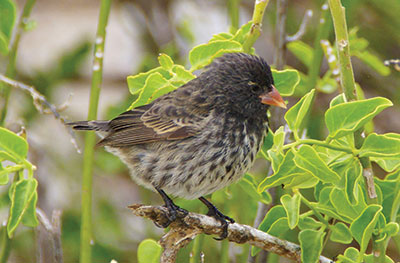
However, in 1982 and 1983, higher-than-normal rainfall stimulated the drought-stressed plants to rebound, and the island developed a lush environment. As a result of the increased seed availability and softer seeds, finch numbers increased, including the preponderance of birds with smaller beaks. For every supposed evolutionary step forward for beak sizes, the trait took a step backward. There was only a temporal population shift.3
As it turns out, these climactic cycles are quite common in the Pacific Basin and are known as the El Niño–Southern Oscillation. This environmental phenomenon greatly appealed to the Grants, who believed that this was an ideal outdoor laboratory for observing natural selection during their 40 years of research on the finches.4
Specified Innate Variation—Not Evolution
Early in the Grants’ research, Peter Grant astutely noticed that the beak trait (shape/size) in a certain finch population was “oscillating back and forth” over time.5 This finch beak oscillation was even noted in an evolution textbook, which stated:
Beaks evolving up in some years, down in other years, and staying constant in yet other years—probably results in some kind of “stabilizing” selection over a long period of time.6
The author uses the mystical term “stabilizing selection” instead of claiming that any major directional evolution was achieved outside of the innate specified range of variability. In reality, the Galápagos finches have only shown their God-given, innate abilities to adapt, survive challenging environmental conditions, and fill niches. And they do this while keeping their basic created kind intact and viable.
The evolutionary reasoning that governs much of modern biology speculates that random mutations result in new traits, but evidence for this has been hard to find in the finch DNA. A 2022 study in Science Advances investigated the genomic architecture underlying finch adaptive diversity, which included a comprehensive analysis of DNA sequences associated with such traits as beak and body size.6
Researchers discovered that in the small, medium, and large ground finches there were 28 different chromosomal locations (loci) showing strong genetic differences that were statistically correlated with beak and body size. The researchers determined that these loci represented ancestral blocks of DNA whose origins predate the recent adaptive diversification of the finches. In fact, a number of the genes inside the large blocks of DNA were those previously found to be associated with beak development.
The bottom line is that these blocks of DNA were not connected to random mutations but to preexisting, functionally complex blocks of stable code. Obviously, the genetic data point not to the random mutations of evolutionary theory but to an all-wise Creator who engineered the code when He created this particular finch kind.
The Science Advances article included further analysis of data from a massive DNA sequencing study published in 2015.7 This original project sequenced the genomes of 120 different individuals representing all of Darwin’s finches and two close relatives. One of the first things the researchers documented was “extensive evidence for interspecific gene flow throughout the radiation.”7 In other words, despite the fact that subsets of the original finch kind had diversified and adapted to specific feeding-based niches, they were still interbreeding on occasion with finches from other niches. Thus, the researchers commented:
Extensive sharing of genetic variation among populations was evident, particularly among ground and tree finches, with almost no fixed differences between species in each group.7
Another interesting finding was that a large 240,000-base region of the finch genome encompassing a regulatory gene, transcription factor ALX1, was strongly associated with beak shape diversity across the different groups of finches. The ALX1 gene is a master regulator of a network of other genes associated with craniofacial development, including beak shape and size. Thus, different variants of the ALX1 gene region strongly contributed to the diversification of beak shape, leading to an expanded utilization of food resources among the various environmental niches.
In another study published in 2023, researchers (including the Grants) used whole genome data from 3,955 of Darwin’s finches representing four species on the Galápagos island of Daphne Major.8 They discovered that only six major loci explained 45% of the observed variation in beak size, which was a highly heritable trait.
The most prominent locus was a gene block containing four genes that carried enough variation within it to cause a rapid adaptive shift in the population in response to drought conditions that altered the food supply. The researchers noted, “Only a small fraction of the genome is strongly differentiated among species of the Geospiza ground finches.”8 Similar to previous research, the data showed that the limited amount of specified diversity was maintained and distributed among the finches by interbreeding. Once again, adaptive, innate variation was readily transferred by interbreeding based on preexisting code blocks. This facilitated adaptation—not random evolutionary mutations.
Epigenetic Mechanisms Further Negate Mutation
Authentic creature kind diversification and adaptation is a process whereby organisms diversify within the boundaries of their own genetic variability. This can result in variants with specific ecological adaptability. While it was once thought that this process was strictly facilitated by DNA sequence variability—as in certain specified major genetic loci mentioned above—Darwin’s classic example of adaptation in finches now includes a surprisingly strong epigenetic component as well.
Epigenetics is emerging as an important theme in creature adaptation.9 It’s becoming evident that both genetic variability and epigenetic mechanisms are built into the genome as adaptive systems of variation. These systems allow for robust diversification and niche filling to occur within the boundaries of created kinds.
Epigenetic changes involve the addition of chemical tags in an organism’s genome without actually changing the genetic code. Both the DNA nucleotides and the proteins called histones that DNA is wrapped around can be chemically tagged by different types of controlling molecules that determine how genes are turned on and off. Thus, the epigenetic regulation of the genome can produce differences in traits without actually being related to changes in the DNA sequence itself.
What’s even more amazing is that these changes can be inherited over multiple generations. Thus, epigenetic changes facilitate variability and diversification within created kinds. Traditional Darwinian evolution alleges that random changes in the DNA generate new and useful variants that are then selected by the environment. Epigenetics soundly negates this idea.
In 2013, a study demonstrated the epigenetic basis of diversifying adaptation in house sparrows, species Passer domesticus, that were introduced in Kenya in the 1950s. Their progressive geographical spread and ecological patterns of adaptation were characterized by differences in genome-wide DNA methylation patterns, not variation in the actual DNA sequence.10
How might epigenetics facilitate adaptation in Darwin’s finches? And could it possibly underly variation in finch beaks? In previous research, it was found that very similar developmental genetic pathways among finch species can produce markedly varied beak shapes.11 So, if the genes are essentially the same between finch species, then what seems to be the major mechanism of variation?
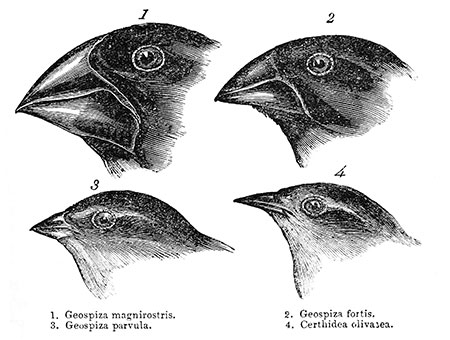
In a 2014 study of Darwin’s finches, researchers examined two different regulatory features in the genome.12 The first was short sections of non-coding DNA sequence that varied in the number of copies (repeated units) called copy number variants, or CNVs. In humans, differences in CNVs form the basis for studying forensics and paternity testing and are also connected with development. The second factor the researchers evaluated was genome-wide patterns of DNA methylation.
From these analyses, the researchers found that epigenetics (DNA methylation) correlated well with increased diversity among finches, but CNVs, based on actual DNA sequences, did not. They also undertook a more focused study of the epigenetic profiles of specific genes involved in the birds’ morphogenesis of beak shape, immune-system responses, and coloring. Remarkably, the epigenetic profiles of the different finch species for all of these developmental gene groups were different, while the DNA sequences were nearly identical.
In a 2017 study, researchers collected data from over 1,000 birds from two different species of Darwin’s finches: Geospiza fortis and G. fuliginosa.13 The birds were separated into two different groups that lived on Santa Cruz Island in the Galápagos, which had a significant human population. One of the finch populations was rural and ate food available in the wild. The others were urban and had adapted to eating human food. They found that urban G. fortis finches were larger in nearly all morphological measurements—including body size and beak shape—compared to rural G. fortis. This was likely due to increased food availability at the urban site.
However, the two different G. fuliginosa populations showed no significant morphological differences. Furthermore, they did not find any differences in the overall study based on DNA sequence data. In contrast, they did discover dramatic epigenetic differences between the urban and rural populations of both species based on DNA methylation analysis. Thus, the adaptations of the birds to two different food-source environments were largely determined by epigenetics—a built-in system of adaptation that has nothing to do with any hypothetical theory of mutation-selection.
Conclusion
Much of the scientific focus on Galápagos finches has been on the different shapes and sizes of their beaks, which are also connected to the broad range of behavioral adaptations exhibited for different food sources. Ground finches forage and exploit the soil and crevices in large rocks for seeds. Cactus finches penetrate and feed on cactus flowers and fruits with their sharp pointed beaks. Warbler finches forage leaves of trees and bushes for small arthropods. Woodpecker finches use small twigs as tools to extract insect larva from crevices in tree bark that they can’t reach. And sharp-beaked finches called vampire finches peck on the feather buds of large birds called boobies to drink their blood.
All of these different adaptations, however, have no fundamental basis in the mutation-selection paradigm of Darwinism. Instead, they are explained by built-in genetic variability and epigenetic control systems in the genome. These have their basis in the exquisite design and complex engineering of the all-wise, omnipotent Creator.
References
- Grant, P. R. and B. R. Grant. 2005. Darwin’s Finches. Current Biology. 15 (16): R614, 3.
- Lack, D. L. 1947. Darwin’s Finches. New York, NY: Cambridge University Press.
- Grant, P. R. and B. R. Grant. 2014. 40 Years of Evolution: Darwin’s Finches on Daphne Major Island. Princeton, NJ: Princeton University Press.
- Grant, P. R. 1991. Natural Selection and Darwin’s Finches. Scientific American. 265 (4): 82–87.
- Ridley, M. 2004. Evolution. Malden, MA: Blackwell, 225.
- Rubin, C. J. et al. 2022. Rapid adaptive radiation of Darwin’s finches depends on ancestral genetic modules. Science Advances. 8 (27): eabm5982. DOI: 10.1126/sciadv.abm5982.
- Lamichhaney, S. et al. 2015. Evolution of Darwin’s Finches and Their Beaks Revealed by Genome Sequencing. Nature. 518 (7539): 371–375. DOI: doi.org/10.1038/nature14181.
- Enbody, E. D. et al. 2023. Community-wide genome sequencing reveals 30 years of Darwin’s finch evolution. Science. 381 (6665). DOI: 10.1126/science.adf6218.
- Tomkins, J. P. 2023. Epigenetic Mechanisms: Adaptive Master Regulators of the Genome. Acts & Facts. 52 (7): 14–18.
- Liebl, A. L. et al. 2013. Patterns of DNA methylation throughout a range expansion of an introduced songbird. Integrative and Comparative Biology. 53 (2): 351–358.
- Mallarino, R. et al. 2012. Closely related bird species demonstrate flexibility between beak morphology and underlying developmental programs. Proceedings of the National Academy of Sciences. 109 (40): 16222–16227.
- Skinner, M. K. et al. 2014. Epigenetics and the Evolution of Darwin’s Finches. Genome Biology and Evolution. 6 (8): 1972–1989. DOI: 10.1093/gbe/evu158.
- McNew, S. M. et al. 2017. Epigenetic Variation Between Urban and Rural Populations of Darwin’s Finches. BMC Evolutionary Biology. 17: 183. DOI 10.1186/s12862-017-1025-9.
* Dr. Tomkins is a research scientist at the Institute for Creation Research and earned his Ph.D. in genetics from Clemson University.





